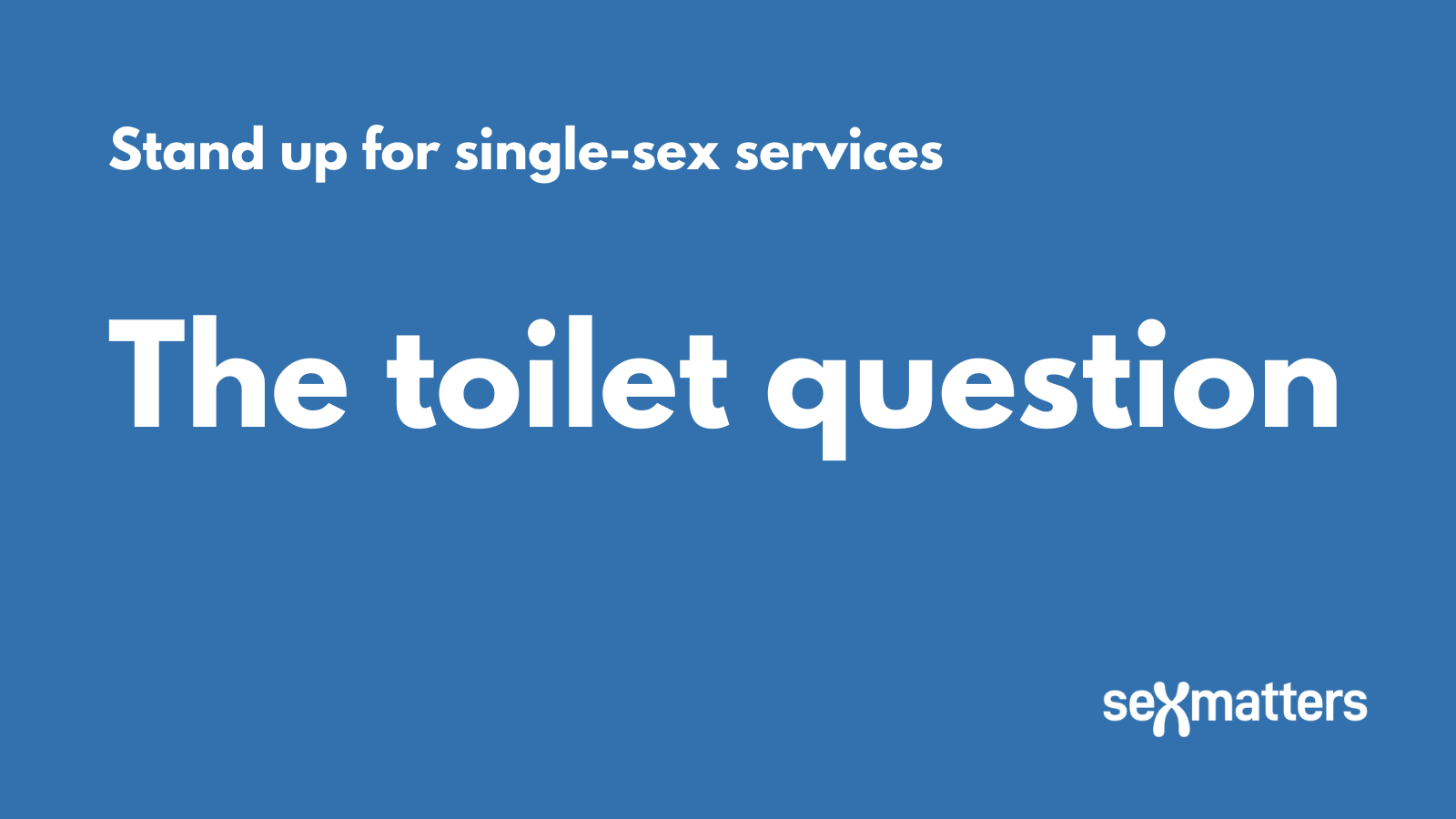This post is part of the Stand up for single-sex services campaign |
The vexed issue of toilets

“Where is the transwoman meant to go?”
This question is being asked of politicians who talk about the need to defend single-sex spaces and services. What if a venue has only men’s and women’s toilets? Where is the transwoman meant to go?
The question about toilets is not just a “gotcha”, it is a serious question that needs to be answered clearly both for people who consider themselves to be transgender, and for those who are trying to manage facilities fairly, safely and lawfully. And it is not just about toilets; the same principles apply to showers, changing rooms, dormitories, hospital wards, and all kinds of spaces where the two sexes are separated for their safety, dignity and privacy.
In most cases facilities are self-policed. Everyone knows what sex they are and they follow the normal social convention of using the toilets designated for their sex. Anything else would violate other people’s privacy.
Use the unisex option
If someone feels uncomfortable using toilets or other facilities designated for their sex, they may want to go elsewhere. This is their choice, but it does not mean they are entitled to use facilities for the opposite sex.
In larger and more modern buildings there is now almost always a unisex toilet available. This year the government approved a change to the building code for public buildings in England that requires them to provide single-sex toilets and specifies that gender-neutral options could be a third option, not a replacement for men’s and women’s.
What if they don’t want to?
Many people who identify as transgender will answer in response to this that they don’t want to use a unisex option, because it means they are not being accepted in their gender identity. The answer to this is: sorry, but other members of the public have rights too and they do not have to pretend not to notice or care what sex other people are.
There used to be a familiar sign by the tills in shops: “Please do not ask for credit, because a refusal often offends.” The same principle applies here.
What if there’s only men’s and women’s?
In some places there may not be a unisex option: for example in older public toilet facilities, historic buildings and very small cafes, or gyms with only two sets of changing rooms.
But it remains the case that there is no right for a trans-identifying person to use the facilities designated for the other sex.
Their own level of discomfort in using the toilets, changing rooms and showers corresponding to their sex (or desire to use facilities for the opposite sex) does not justify imposing discomfort, and for some women fear, by using the other sex’s facilities.
Women who identify as men may not want to use women’s facilities, and if they have developed typically male features such as facial hair or a deeper voice so that they may be perceived as male, their presence in women’s toilets may cause other female users fear and discomfort. But this does not give them the right to use men’s facilities. Like trans-identifying men, such women may have to find alternatives.
What about those with a gender-recognition certificate?
Very few trans-identifying people have gender-recognition certificates and they do not generally carry them around with them. Having a gender-recognition certificate does not change someone’s actual sex or their appearance. The ability of other people to recognise who is male and who is female is unaffected by such paperwork.
If a service provider turns someone away from a space for women because that person is male, and it later turns out the person has a gender-recognition certificate and seeks to sue for discrimination, the service provider will be able to rely on the exceptions in the Equality Act.
Everyone is confused about the law
The question that politicians are being asked is a difficult one, because for a long time doctors, employers, government departments and public bodies told people with a transgender identity that they could use opposite-sex facilities. But they didn’t think about other people’s rights.
Labour’s national campaign co-ordinator, Pat McFadden, has said: “We want to protect women-only spaces but let’s be kind to people.” But it isn’t kind to women, to frontline workers or to trans people themselves to put everyone in an ambiguous situation without clear rules.
The next government needs to make it clear to both service providers and service users that a single-sex service should mean just that. There is no right for a man who identifies as a “transwoman” whether with a government certificate or without one to use women’s toilets, showers, changing rooms, dormitories or any other facilities that are just for women. This is why the meaning of sex in the Equality Act needs to be made clear. Whether you are male or female is what matters. Everyone needs to know that when they walk into a toilet labelled men or women, that space will be single-sex.
